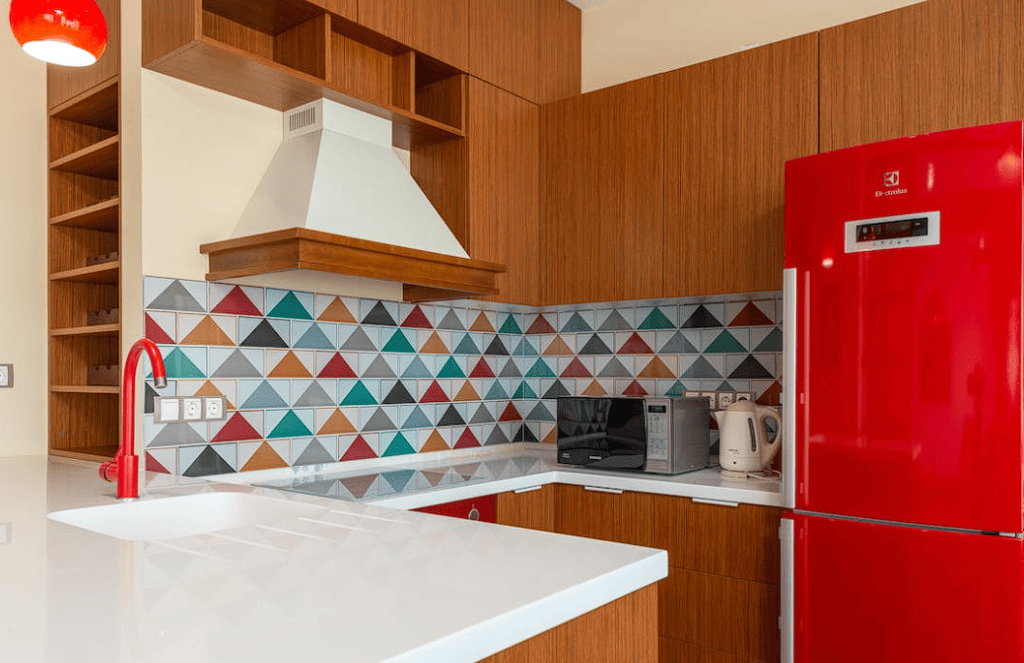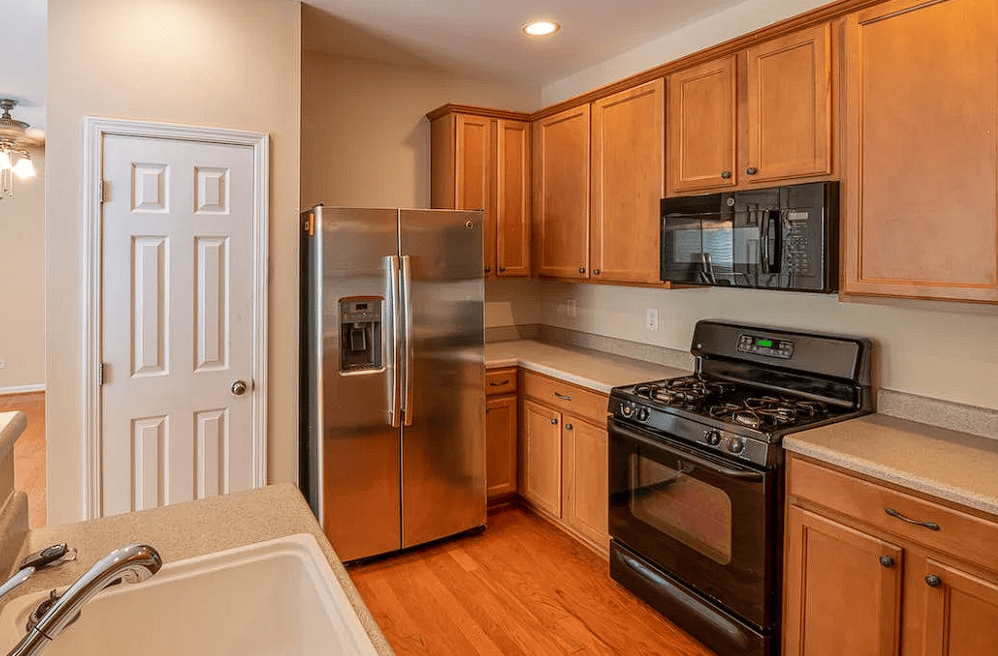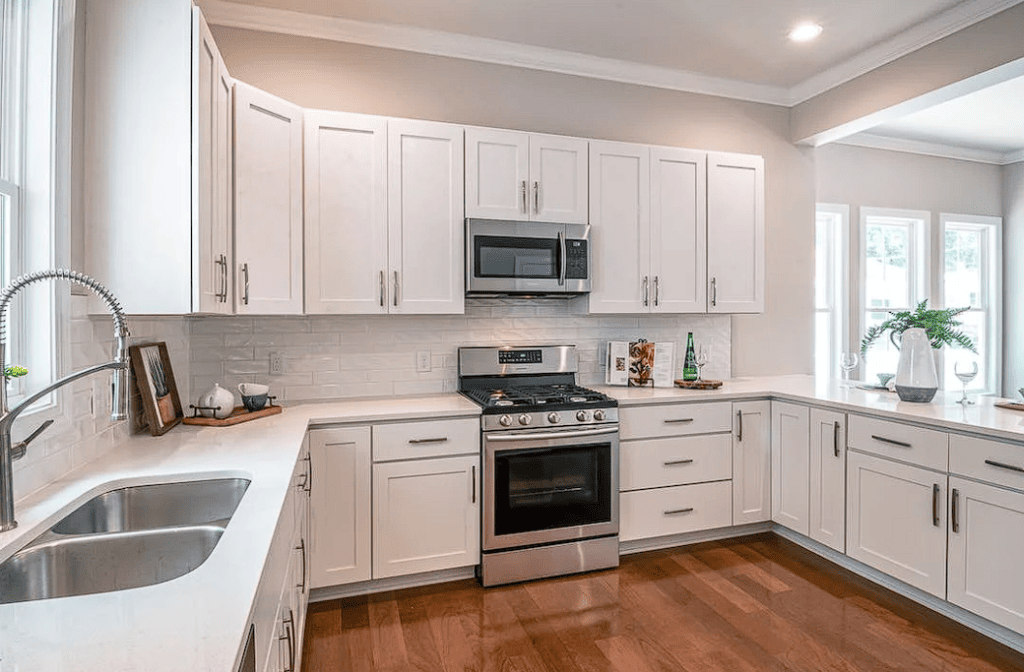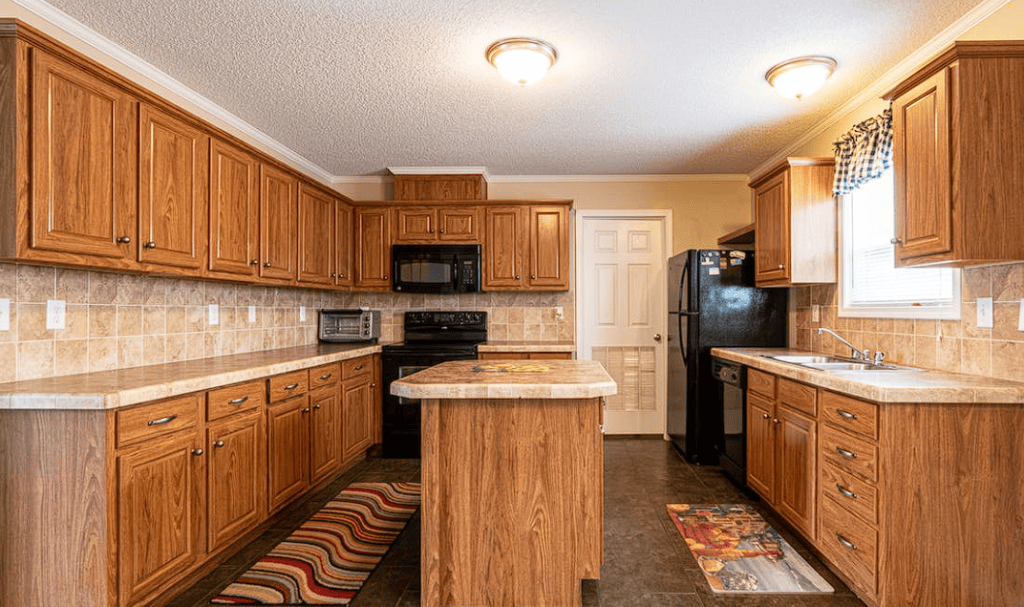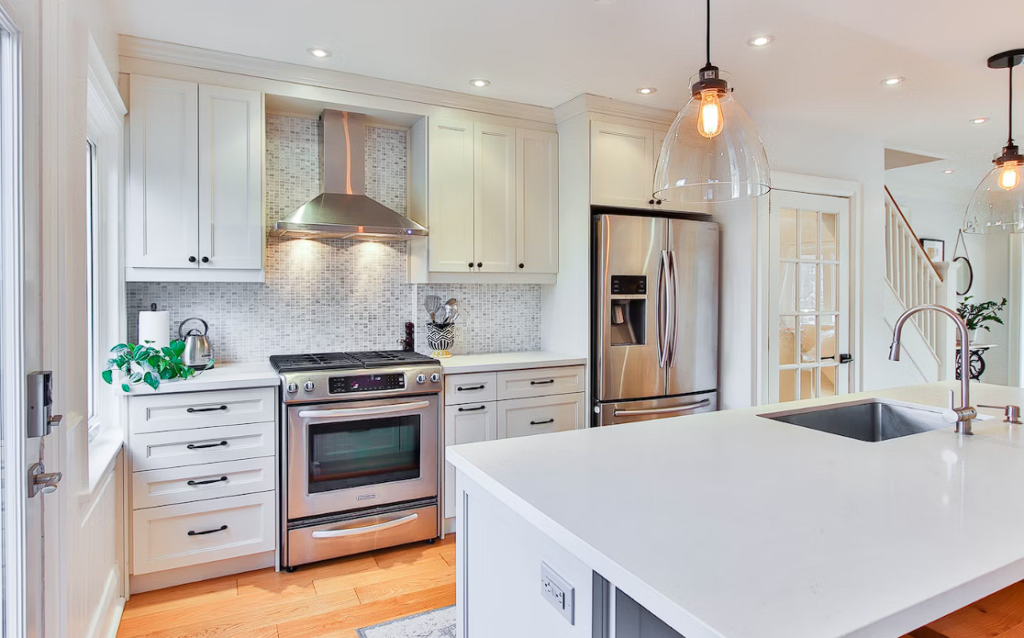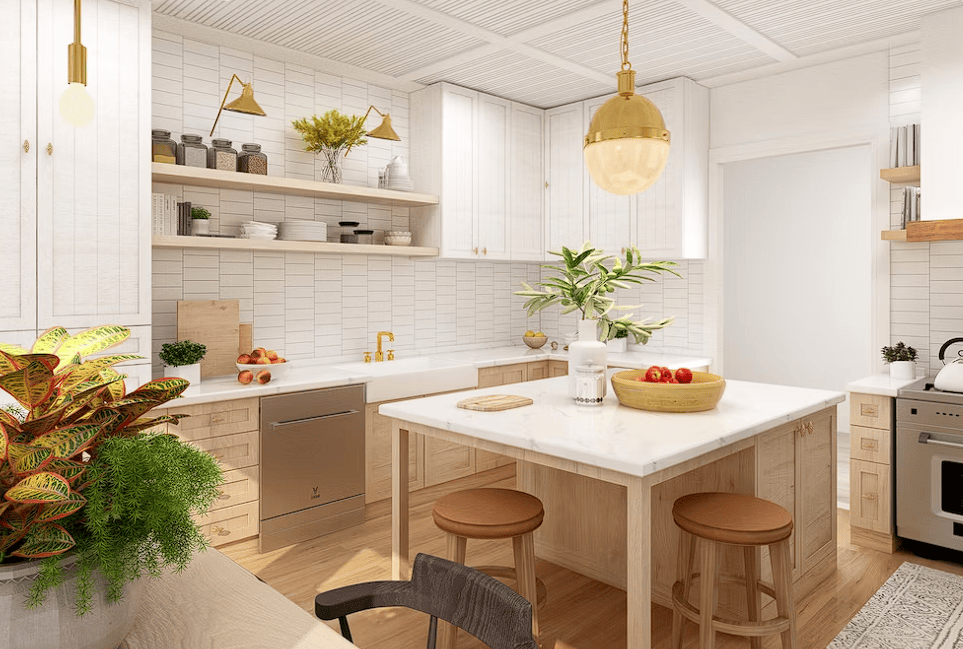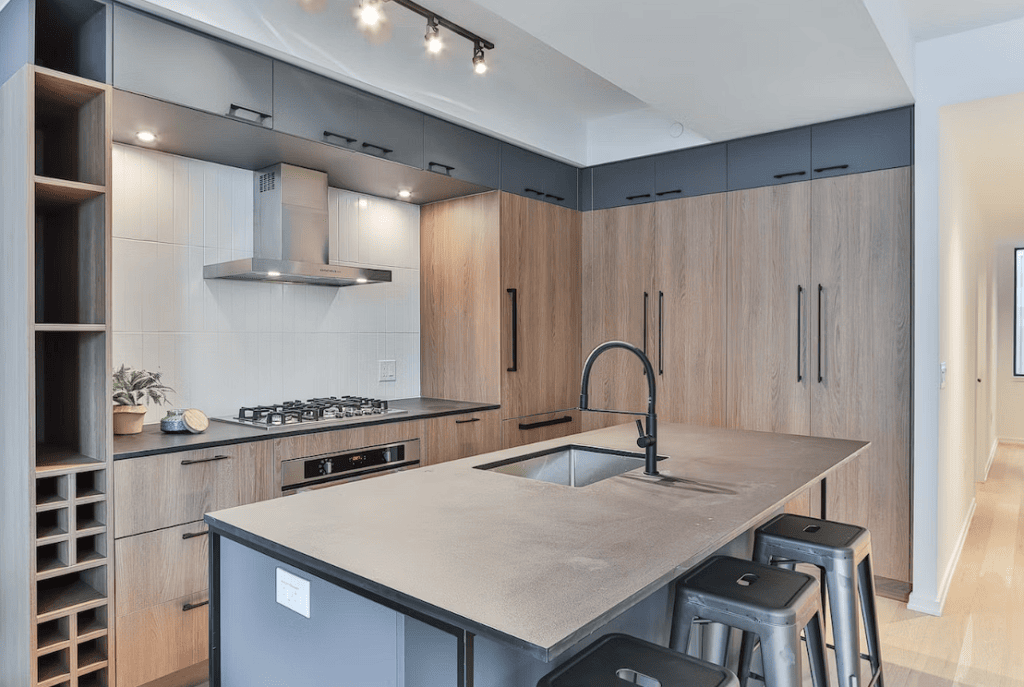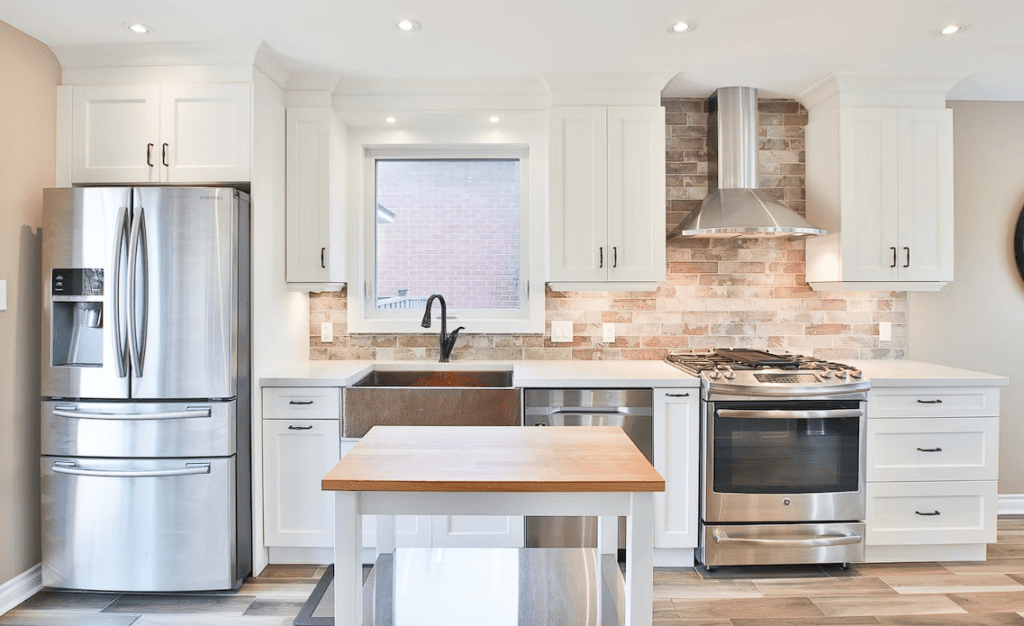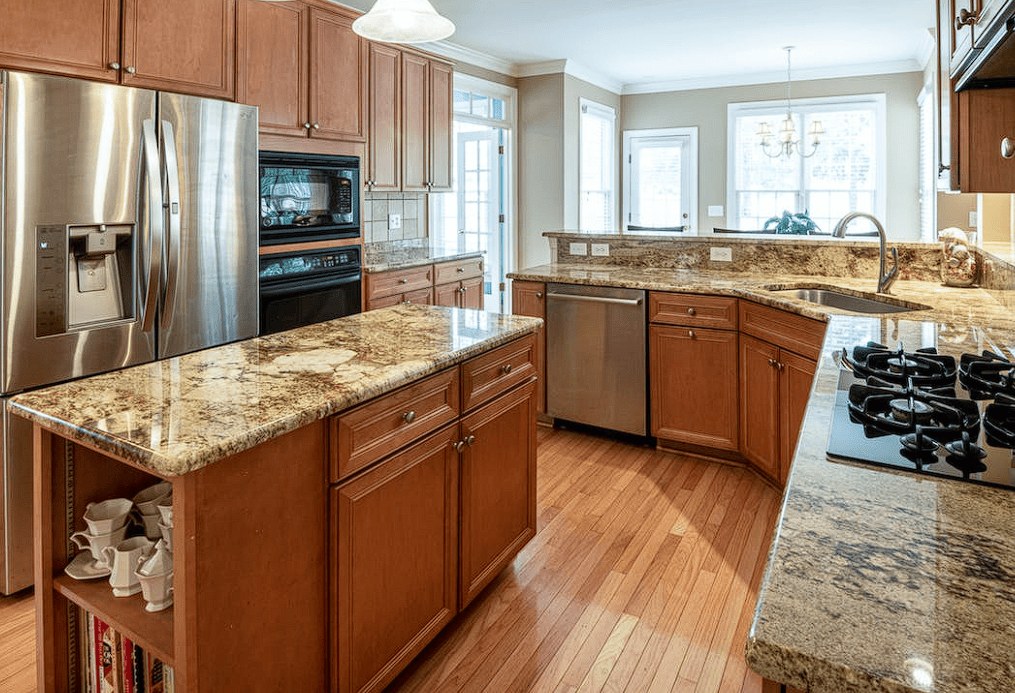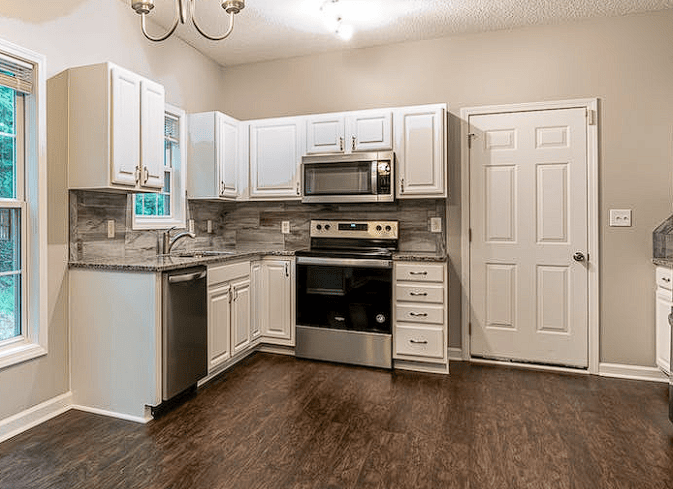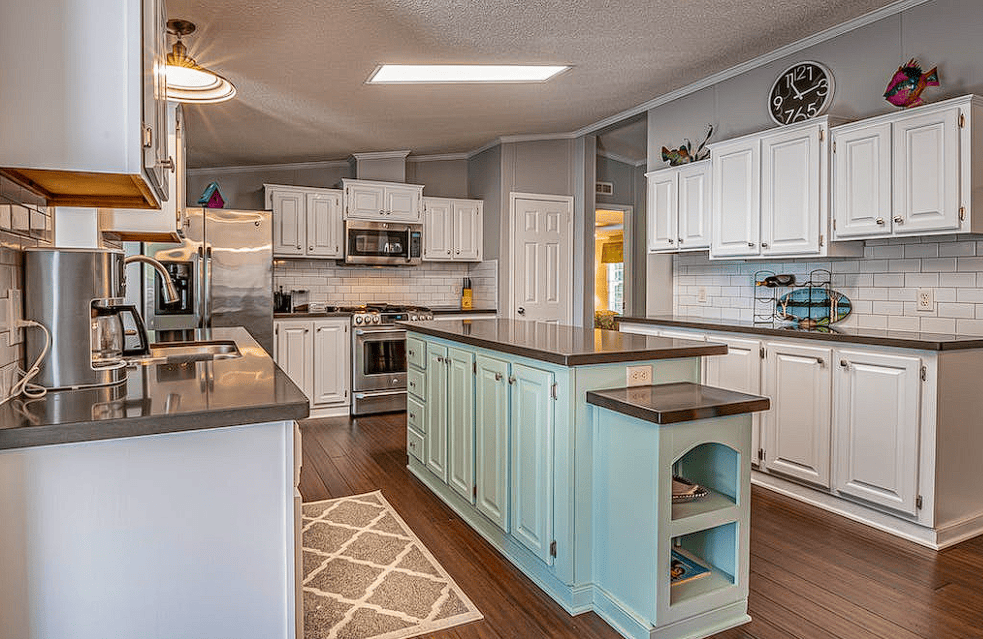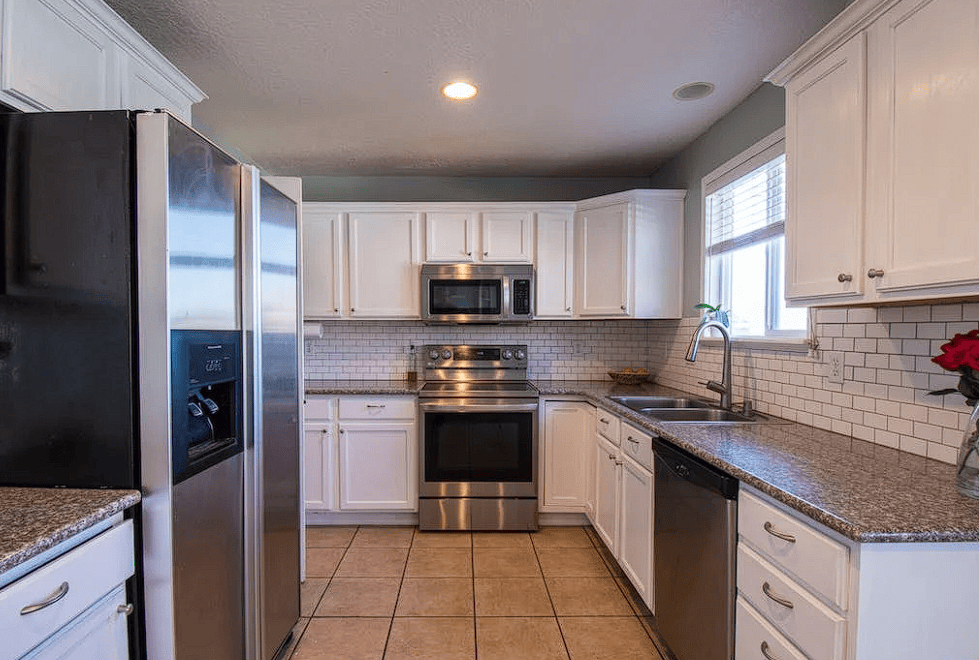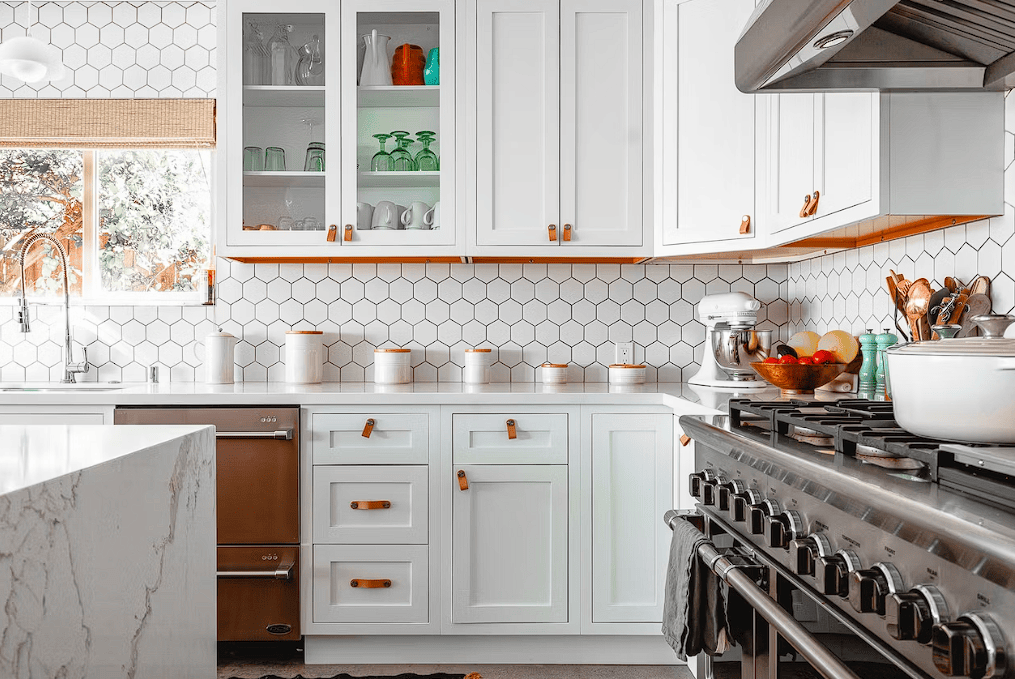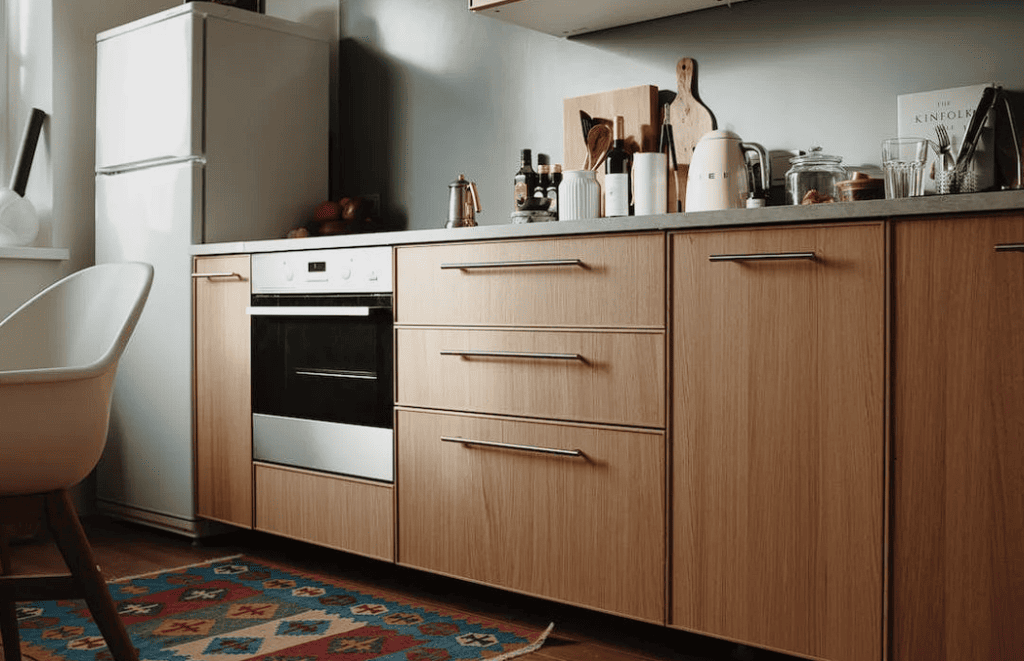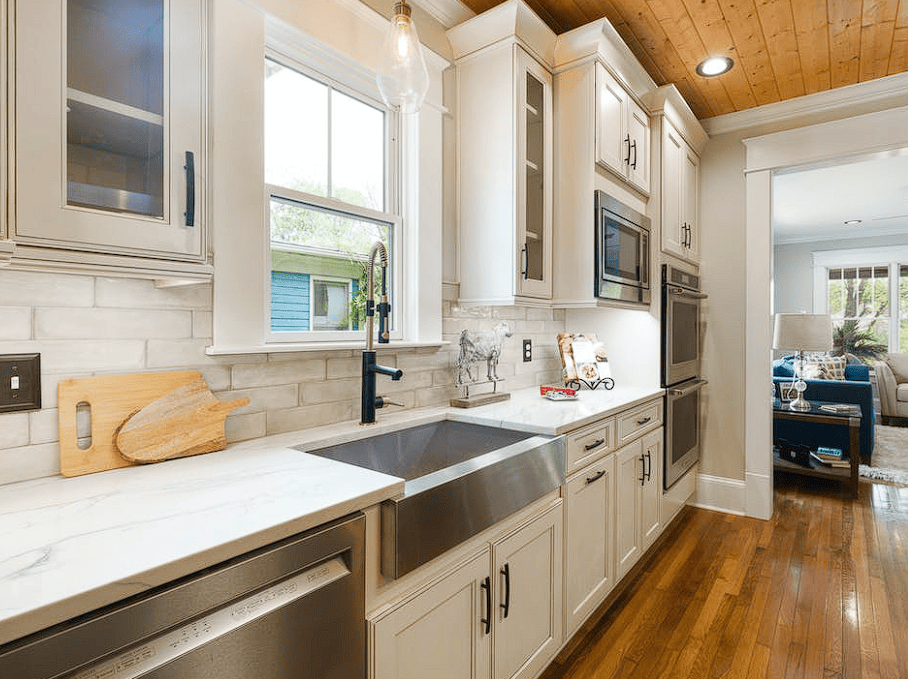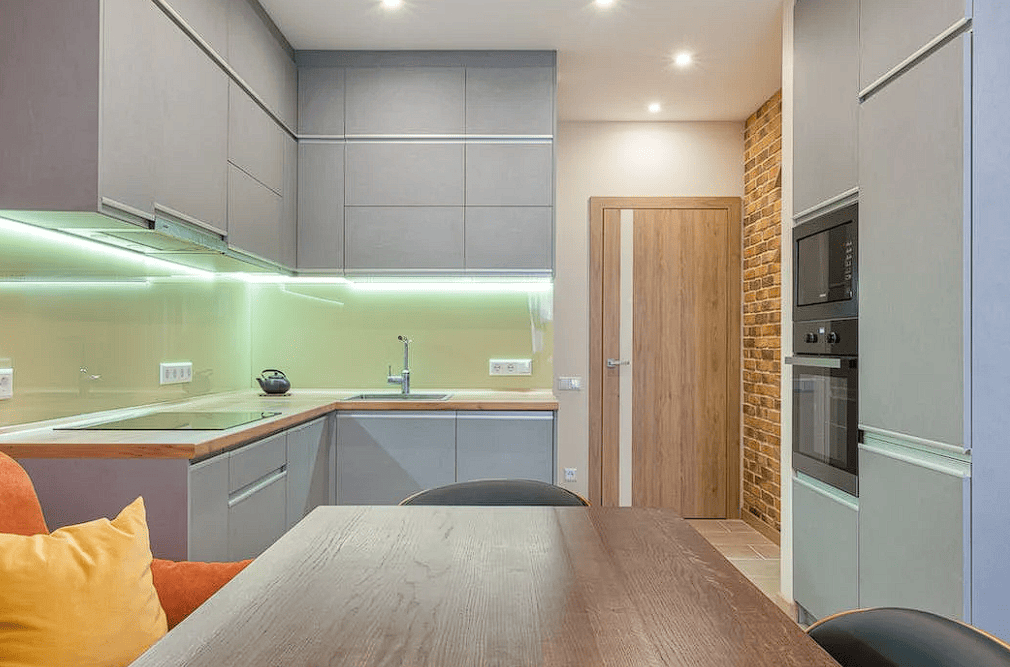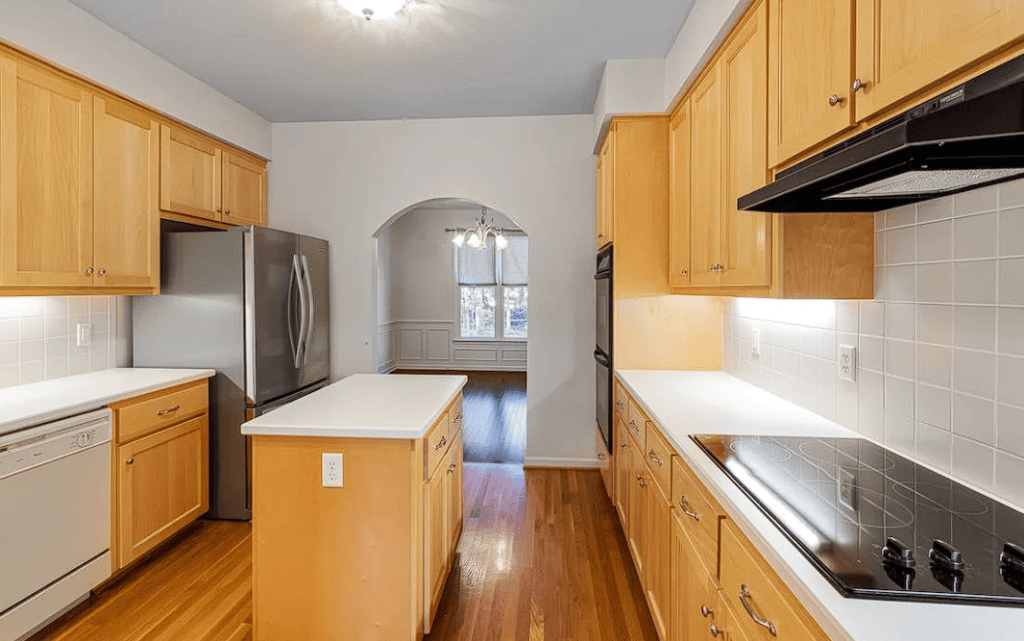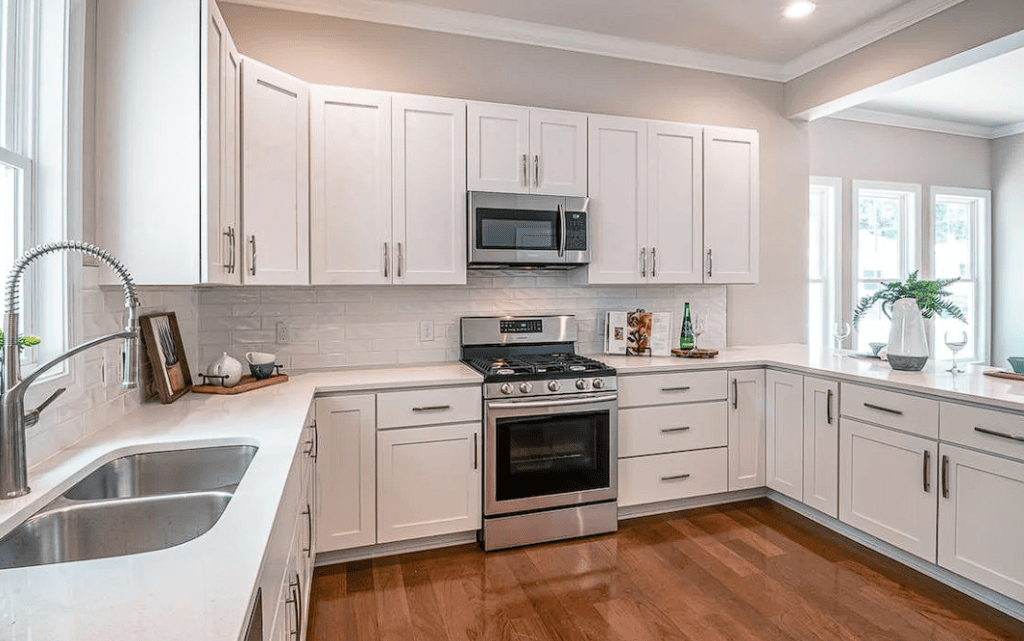There are a number of different materials from which to construct kitchen cabinets. Due to their many advantages over competing materials, plywood kitchen cabinets have become increasingly popular. Plywood cabinets are resilient and long-lasting because they are constructed from layers of wood veneer that have been glued together. Plywood cabinets are long-lasting and inexpensive, as well as being aesthetically pleasing and eco-friendly.
The advantages of plywood kitchen cabinets will be discussed in this article. These include the material's ability to withstand water and heat, as well as its low cost, high resale value, long lifespan, adaptability, and low maintenance. Knowing the benefits of plywood cabinets will help you make a well-informed decision when selecting new cabinetry for your kitchen.
What Are Plywood Kitchen Cabinets?
A kitchen remodel will inevitably be a sizable project. Choosing your kitchen cabinets, however, will be one of the first and most crucial steps you take. Plywood kitchen cabinets are gaining popularity due to their many advantages over other available options.
Plywood is an adaptable material used in many building and do-it-yourself projects. Plywood is constructed from layers with their grains running perpendicular to one another, and an odd number of plies is typically used. Because of this, plywood is incredibly sturdy and reliable. You can find plywood in a wide range of quality levels, thicknesses, and dimensions. It has a wide range of applications, from cabinet making to bespoke furniture design. Plywood, thanks to its durability and adaptability, is a must-have for any woodworker or do-it-yourselfer.
What Is The Best Species Of Wood To Use?
When building a plywood kitchen, birch plywood is the material of choice because it is superior in quality and strength. The natural light and gorgeous finish of this wood make for a stunning Scandi aesthetic.
Oak and walnut are two dark wood options. Bamboo is another choice because it is durable and renewable (it can be harvested again in three to five years).
Benefits Of Plywood Kitchen Cabinets
Durable
Thin layers of wood veneer are stacked together to create plywood, a type of manufactured wood. It's perfect for kitchen cabinetry because of its strength and longevity. Plywood kitchen cabinets are an excellent alternative to solid wood ones because of their resistance to warping and cracking. Because of its increased stability in damp conditions, plywood is a popular material for coastal kitchen cabinets. Since it is manufactured from naturally replenishing forests, plywood is another eco-friendly option.
Easy to Clean
Plywood cabinetry, moreover, requires little in the way of upkeep. Plywood cabinetry can be cleaned with a damp cloth, while hardwood cabinetry needs to be polished regularly and can be damaged by moisture. Plywood is a low-maintenance material for your kitchen because of its smooth surface, which prevents stains and spills.
Versatile
Plywood kitchen cabinets are a popular choice because of their aesthetic appeal. Most people's mental image of plywood is of discount store particleboard furniture. Plywood, on the other hand, is a highly adaptable material that can be used to make both attractive and sturdy cupboards. There is a wide selection of colours and materials to choose from. Plywood's malleability also facilitates the development of unique aesthetics. You can always change the look of your plywood cabinets by painting or refinishing them.
Cost-Effective
If you need inexpensive kitchen storage, plywood cabinets are a great option. Plywood cabinetry is an excellent way to cut costs during a kitchen renovation. They don't have the same high-end feel as solid wood cabinets, but they're a lot cheaper. Be sure to enquire about any available extended warranties before making a purchase from a manufacturer.
Plywood Vs Particle Board Cabinets: Which Is Better?
Now we can get to the meat of the matter: whether particleboard or plywood is the superior building material.
Cabinet-grade plywood and particle board may look similar after finishing, but their construction couldn't be more dissimilar. Investigating is the best way to get the answers you seek.
Plywood Construction
Plywood cabinets are constructed from thin layers of wood that are glued together using a strong adhesive and sometimes finished with an edge banding (veneer). Particle boards, which are made of compressed wood fibres and chips, are not the same thing.
Despite plywood boxes' veneer edge banding and composite construction, it's the number of layers that ultimately determines the material's strength.
The quality of plywood cabinets is also affected by the type of wood used for each layer. Hardwood and softwood veneers would work well, even though plywood typically uses lighter wood.
Plywood boxes that are solidly built are of high quality. In contrast to particle boards, however, they are very pricey. Plywood manufacturers typically use thinner layers of more expensive wood for the outer coating and thicker layers of softer, less expensive wood for the interior in order to cut costs.
Plywood is the material of choice for high-quality kitchen cabinets. Plywood, as unbelievable as it may sound, has a disadvantage in that it absorbs water more quickly than particle boards. However, quality plywood cabinets are far more likely to outlast their particle board counterparts. Therefore, it is recommended to always choose quality plywood, even if it costs more. If you can't afford solid wood, consider particle board for your cabinetry instead.
It will always be difficult to tell low-quality plywood from high-quality plywood. After all, it's nearly impossible to tell if a sheet of plywood is made from hardwood or softwood. Because of this, plywood quality fluctuates widely with market conditions.
Particle Board Cabinets
Wood chips and semi-fibrous pieces are compressed together in a mould to create particle board cabinets, which function similarly to plywood. In the early 1950s, particle board made its debut in the market. Although initially quite costly and fragile, manufacturers have developed strategies to increase durability while simultaneously decreasing the price. These days, most people opt for particle board cabinets because of their low cost and other benefits.
These days, particle boards are manufactured under extreme conditions of pressure and heat, making them incredibly sturdy. Since particle board is more manageable, most factories prefer to make more cabinetry out of it. Particle board doesn't warp or twist like plywood and can be cut with ease while maintaining a consistent thickness and shape.
Due to its smaller wood fibres (without grains), MDF has remained one of the best types of modern particle board materials. However, it is often heavier and more expensive than alternatives that do not use MDF.
Factors To Consider When Determining The Best Cabinet Boxes
There are a lot of moving parts to consider when designing your kitchen cabinet box. Some of these aspects concern construction and installation techniques, while others relate to the durability, quality, availability, and, most importantly, cost of the materials themselves.
Let's look at a few of these factors and how they could influence the design of your cabinets.
Material And Strength (Quality)
The durability of the material should be a primary concern whenever installing new cabinetry, whether in the kitchen or the bathroom. Hardwood (solid wood), plywood (veneer wood), and particle board (furniture board) all have their uses, but you want to make sure you're getting thick, high-quality sheets that will last. This is because your kitchen cabinet's ability to withstand stresses like moisture, heat, and pressure depends heavily on its overall quality and strength.
Construction Methods and Installation
While it's critical that the cabinet box be made of high-quality materials, the installation process itself is far more critical. If your cabinets are well-built and installed, no one will ever know that they are made out of plywood or particle board.
In other words, building and installing the cabinets correctly should receive a lot more focus. Because of its superior strength, a solid wood or plywood cabinet may be preferable to a particleboard one. No matter how sturdy the plywood is, it will fall apart in a matter of months if the layers aren't properly bonded during construction, or the cabinet isn't set up properly.
Price And Budget
The quality and cost of kitchen cabinets made from particleboard and plywood vary widely. Before contacting a dealer, you should calculate how much money you have and whether or not it is enough to pay for the cabinet box construction you want for your kitchen.
The cost of plywood cabinets is higher than that of particleboard ones. The price of high-quality, water-resistant plywood kitchen cabinets can easily exceed your budget, but there are some cabinet manufacturers who sell at much lower prices than many others.
Availability
You still need to think about accessibility when weighing budget versus price. No amount of money will help if the ideal cabinet for your kitchen is not for sale.
Cabinets made of particle board are a little easier to come by than their plywood counterparts. For the most part, it's not possible to order plywood kitchen cabinets and have them delivered the next day.
Quality of the Plywood
The materials used to construct plywood vary. These are the most popular types of hardwood and softwood. Plywood's quality is based on its thickness. The greater the thickness, the better the material's performance. Plywood kitchens of 3/4 inches in thickness are a good option.
Type of Finish
Several different coatings can be applied to plywood. Veneer, paint, and laminate are the three most popular finishes. In the first case, the plywood is given a fresh coat of finish to update its appearance. The material can be painted for a low-cost finish. The use of laminate increases the plywood's durability. The purchaser can decide how he wants the item finished.
Professional Installation
Plywood cabinet installation deals are worth investigating if they come with your order. You can try putting it together on your own, but if experts do it, there will be far fewer issues when you first turn it on.
In conclusion, it's important to stress the merits of furnishing with plywood. There are numerous advantages for purchasers and only a few avoidable drawbacks.
Conclusion
Plywood kitchen cabinets are becoming increasingly popular due to their many advantages over competing materials. Plywood is an adaptable material used in many building and do-it-yourself projects, constructed from layers of wood veneer that have been glued together. Plywood is long-lasting and inexpensive, as well as being aesthetically pleasing and eco-friendly. The best species of wood to use is birch plywood, which is superior in quality and strength. Oak and walnut are two dark wood options, while bamboo is durable and renewable.
Plywood kitchen cabinets are an excellent alternative to solid wood ones due to their strength and longevity. They are easy to clean and have a wide selection of colours and materials to choose from. They are also cost-effective, as they don't have the same high-end feel as solid wood cabinets, but they are a lot cheaper. Plywood Vs Particle Board Cabinets: Which Is Better? Investigating is the best way to get the answers you seek.
Plywood cabinets are constructed from thin layers of wood that are glued together using a strong adhesive and sometimes finished with an edge banding. Particle boards are made of compressed wood fibres and chips. The quality of plywood cabinets is affected by the type of wood used for each layer. Plywood is the material of choice for high-quality kitchen cabinets, but it has a disadvantage in that it absorbs water more quickly than particle board. Particle board cabinets are manufactured under extreme conditions of pressure and heat, making them incredibly sturdy.
MDF is one of the best types of modern particle board materials, but it is often heavier and more expensive than alternatives that do not use MDF. The most important details when designing a kitchen cabinet box are material and strength, construction methods and installation, and price and budget. Materials such as hardwood, plywood, and particle board should be chosen based on their durability, quality, availability, and cost. Construction methods and installation are more important than the quality and cost of the materials. Solid wood or plywood cabinets may be preferable to particle board cabinets due to their superior strength.
Before contacting a dealer, it is important to consider the cost of plywood kitchen cabinets, availability, quality of the plywood, type of finish, and professional installation. Plywood kitchens of 3/4 inches in thickness are a good option due to their thickness, durability, and affordability. Professional installation deals are worth investigating if they come with the order. There are numerous advantages for purchasers and only a few avoidable drawbacks.
Content Summary
- Plywood kitchen cabinets have become increasingly popular.
- Plywood cabinets are resilient and long-lasting because they are constructed from layers of wood veneer that have been glued together.
- Plywood cabinets are long-lasting and inexpensive, as well as being aesthetically pleasing and eco-friendly.
- Birch plywood is the material of choice because it is superior in quality and strength for kitchen cabinets.
- Oak, walnut, and bamboo are other options for plywood kitchen cabinets.
- Plywood is an adaptable material used in many building and do-it-yourself projects.
- Plywood is constructed from layers with their grains running perpendicular to one another.
- Plywood is incredibly sturdy and reliable.
- Plywood can be found in a wide range of quality levels, thicknesses, and dimensions.
- Plywood is a must-have for any woodworker or do-it-yourselfer.
- Plywood kitchen cabinets are durable, and they resist warping and cracking.
- Plywood kitchen cabinets are easy to clean, require little in the way of upkeep, and prevent stains and spills.
- Plywood kitchen cabinets are versatile and aesthetically appealing.
- Plywood cabinets come in a wide selection of colours and materials.
- Plywood's malleability facilitates the development of unique aesthetics.
- Plywood cabinets are cost-effective and a great option for inexpensive kitchen storage.
- Extended warranties may be available for plywood cabinets.
- Plywood cabinets are better than particle board cabinets.
- Cabinet-grade plywood and particle board may look similar after finishing, but their construction couldn't be more dissimilar.
- The quality of plywood cabinets is affected by the type of wood used for each layer.
- Plywood boxes that are solidly built are of high quality.
- Plywood absorbs water more quickly than particle boards.
- Quality plywood cabinets are far more likely to outlast their particle board counterparts.
- It is recommended to always choose quality plywood even if it costs more.
- If you can't afford solid wood, consider particle board for your cabinetry instead.
- It is difficult to tell low-quality plywood from high-quality plywood.
- Plywood quality fluctuates widely with market conditions.
- Particle board cabinets are made of compressed wood fibres and chips.
- Particle board cabinets are cheaper than plywood cabinets but not as durable.
- Plywood is the material of choice for high-quality kitchen cabinets.
Frequently Asked Questions
Plywood kitchen cabinets can be environmentally friendly, depending on the type of wood used and the manufacturing process. Plywood can be made from sustainably harvested wood and can be manufactured using low-emission adhesives.
Yes, plywood kitchen cabinets can be customized to fit specific kitchen layouts and design preferences. They can be painted or stained to match any design aesthetic.
Plywood kitchen cabinets are easy to maintain with regular cleaning using mild soap and water. They may need occasional touch-ups with a matching wood finish.
Plywood kitchen cabinets can last for many years with proper maintenance and care. They are generally more durable than cabinets made from particleboard or MDF.
Plywood kitchen cabinets are typically easy to install, especially if they come pre-assembled. However, professional installation is recommended for best results.

